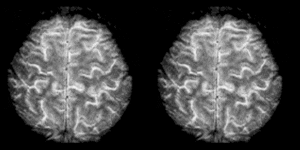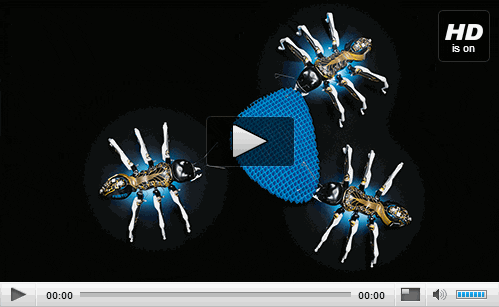
Neuroscientists are taking inspiration from natural motor control to design new prosthetic devices that can better replace limb function. In new work, researchers have tested a range of brain-controlled devices – from wheelchairs to robots to advanced limbs – that work with their users to intelligently perform tasks.
These neuroprosthetic devices decode brain signals to determine the actions their users want to take, and then use advanced robotics to do the work of the spinal cord in orchestrating the movements. The use of shared control – new to neuroprostheses – “empowers users to perform complex tasks,” says José del R. Millán, who presented the new work at the Cognitive Neuroscience Society (CNS) conference in San Francisco today.
Millán, a researcher at the Swiss Federal Institute of Technology in Lausanne, Switzerland, began his career designing autonomous robots that could learn from their own experiences. He then became interested in having these robots help disabled people in a “very natural, direct and intuitive way,” he says. “And what more direct than decoding user’s intention from their brain signals?”
So, Millán began working on “brain-computer interfaces” (BCIs), designing devices that use people’s own brain activity to restore hand grasping and locomotion, or provide mobility via wheelchairs or telepresence robots, using people’s own brain activity.
“The prostheses and robots that our BCIs control are intelligent, as they can interpret many low-level details that are not necessarily coded in the mental commands,” he says. Importantly, they also work autonomously if the users do not want to change their behavior. This function mirrors how our deep brain areas, spinal cord, and musculoskeletal system work together in many routine tasks, allowing our bodies to do simple tasks while we focus our attention elsewhere.
In his and colleagues’ latest work, they tested a variety of brain-controlled devices on people with motor disabilities, in some case quite severe. The participants successfully completed tasks ranging from writing to navigation at similar levels of performance as healthy control groups.
The individuals operated the devices by voluntarily and spontaneously modulating the electrical brain activity, called EEGs, to deliver commands. EEGs have the benefit that they can be recorded non-invasively through probes on the scalp, rather than requiring surgery or sophisticated machinery. “It also provides a global picture of our brain patterns, what is necessary to decode all the variety of neural correlates we want to exploit,” Millán explains.
The participants needed a relatively short training period of no more than 9 sessions before being able to operate the devices. And those using telepresence robots were able to successfully navigate through environments they had never visited. Key to their success, Millán says, was the concept of shared control – using robots’ sensory capabilities to interpret the users’ command in context.
Read more: Intelligent Neuroprostheses Mimic Natural Motor Control
The Latest on: Neuroprosthetics
[google_news title=”” keyword=”Neuroprosthetics” num_posts=”10″ blurb_length=”0″ show_thumb=”left”]
via Google News
The Latest on: Neuroprosthetics
- Blue Arbor Technologies Receives FDA Breakthrough Device Designation and TAP Enrollment for the RESTORE™ Neuromuscular Interface Systemon April 24, 2024 at 6:06 am
FDA grants Breakthrough Device Designation to Blue Arbor RESTORE System designed to enable naturalistic function for those with upper limb prosthetics ...
- Brain's Cerebellum Could Help Direct Prosthetic Limbson April 16, 2024 at 4:36 am
Key Takeaways The brain's cerebellum could help people better control robot limbs, wheelchairs and keyboards Input from the cerebellum appeared to help lab rats better control a robot water tube ...
- Optogenetics Illuminates Cerebellum's Role in Neuroprostheticson April 15, 2024 at 9:24 am
The field of neuroprosthetics, which enables the brain to operate external devices like robotic limbs, is starting to gain traction as a potential treatment option for individuals who are ...
- Montgomery County Hosts Second Chance Resource Fair for Returning Citizenson April 15, 2024 at 9:00 am
Lori Schreiber, Montgomery County Clerk of Courts, is spearheading the Second Chance Resource Fair, a pivotal event designed to support individuals reentering society after incarceration. Scheduled ...
- Boosting the brain's control of prosthetic devices by tapping the cerebellumon April 15, 2024 at 8:41 am
Neuroprosthetics, a technology that allows the brain to control external devices such as robotic limbs, is beginning to emerge as a viable option for patients disabled by amputation or neurological ...
via Bing News











